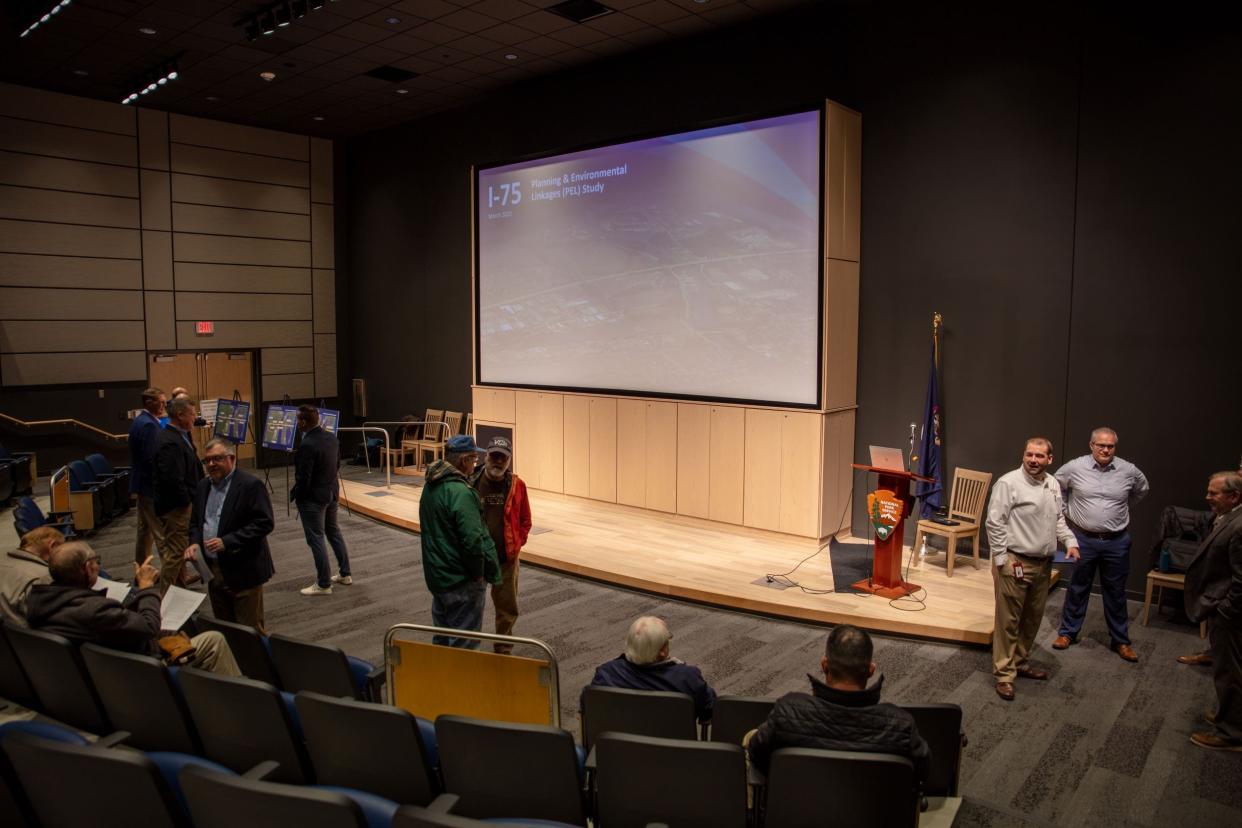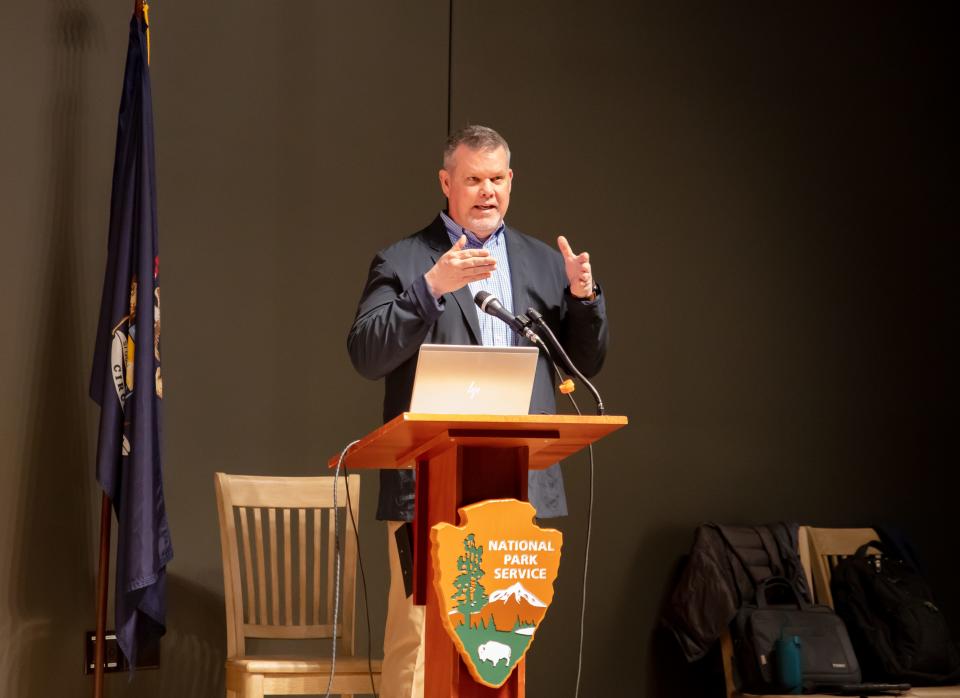MDOT talks with public about plans for Elm, Front I-75 exits

The Michigan Department of Transportation hosted an open house to gather public opinion, answer questions and present information about possible plans to revamp a section of interchanges on Interstate 75 in Monroe.
The event took place at the River Raisin Battlefield National Park’s Visitor Center theater on Mar. 15. It was part of MDOT’s ongoing Planning and Environmental Linkages (PEL) study, which aims to help create plans to improve I-75 near the bridge over the River Raisin, including possible improvements to the Elm Avenue and Front Street exits.
Earlier report:Open house on I-75 Monroe interchanges project set for March 15
The open house began with some mingling and greeting while attendees talked and viewed mapped plans on display. Mike Davis Jr., region planner and study manager for MDOT, began the presentation by explaining what a PEL is and some background on the current study. He said these specific plans started about a year ago, and the PEL is slated to conclude this summer. Davis said that whatever the outcome, the project would likely not begin until 2028.
Next, Mark Cochran, Monroe's director of economic and community development, addressed the audience to explain more background about redevelopment plans in the area and how they relate in the bigger picture.
“This conversation with the community really started in 2017 … knowing that MDOT was going to be looking at this section of I-75 and recognizing the unsatisfactory conditions of the interchanges with Front and Elm Street,” Cochran said.
Cochran added that the city engaged local business owners and others to gather opinions and options prior to MDOT’s study. He explained that the planning efforts have been harmonious, and he is confident that stakeholders in the area are having their voices heard during the process.
“I want to thank MDOT’s openness to looking at what the city has done along the way to help guide the work moving forward,” he said.
Cochran also talked about how these plans might fit in with the city’s current master plans as well as how potential project outcomes might be serendipitous for improvements along Elm Avenue.
“We want to make sure that whatever impacts are done as part of the I-75 project at Front and Elm positively impact the surrounding neighborhoods,” Cochran said. “We appreciate all these projects working in tandem together.”
Todd Davis, of engineering firm WSP, said that the PEL has taken other nearby projects and existing interchanges into consideration, especially the four that grant entry to Monroe via I-75.
“We also are looking at what’s going on at Dixie and Laplaisance because whatever happens here, depending on alternatives, would affect traffic,” Davis said.
WSP’s Dan Beard took the stage to present alternative proposed plans to deal with the interchanges, most with an “A” and “B” version – “A” versions keep both interchanges active, and “B” plans have the Elm Street interchange closed.
Beard explained a scoring system that considered various factors such as safety, environmental impact, aesthetics, and traffic operations. One of the highest-scoring plans, “Alternative 3,” would utilize collector-distributor (CD) roadways to keep both sides of the river open to traffic to and from I-75. This means including parallel roadways that run alongside the main freeway through the interchange area, separated by a barrier.
Beard said that so far, public responses have shown that many prefer to keep Elm Street access to and from I-75, though many acknowledged the safety issues associated with the current layout. Presently, the interchanges are close together with sharp corners and inconvenient entryways, according to public feedback.
Matt Wendling, also with WSP, said the possibility of keeping the Elm Street interchange has been a major part of the conversation.

“We wanted to keep Elm open, so every one of these alternatives we came up with had that option to make sure we did whatever we could to keep Elm open,” Wendling said.
Wendling said that this area is particularly difficult from a planning perspective, so they have been sure to move cautiously and consider numerous factors along the way.
“We’ve had more constraints on this area than we have on many projects,” Wendling said. “You’ve got environmental issues, natural habitat, protected wetlands, trails, railways, heavy industrial, and you’ve got a wastewater treatment plant in the shadow of the bridge.”
“You couldn’t pick a more difficult area, but we’re always up for a challenge,” he added.
Todd Davis said that the overall goal is to improve safety and functionality in the area while minimizing impacts on the natural environment. Regardless, he said that it is clear that something has to change in that area.
“These interchanges would not be built today.”
For more information about the PEL and to participate in MDOT’s survey, visit tinyurl.com/I75ElmFrontStudy.
This article originally appeared on The Monroe News: MDOT talks with public about plans for Elm, Front I-75 exits

